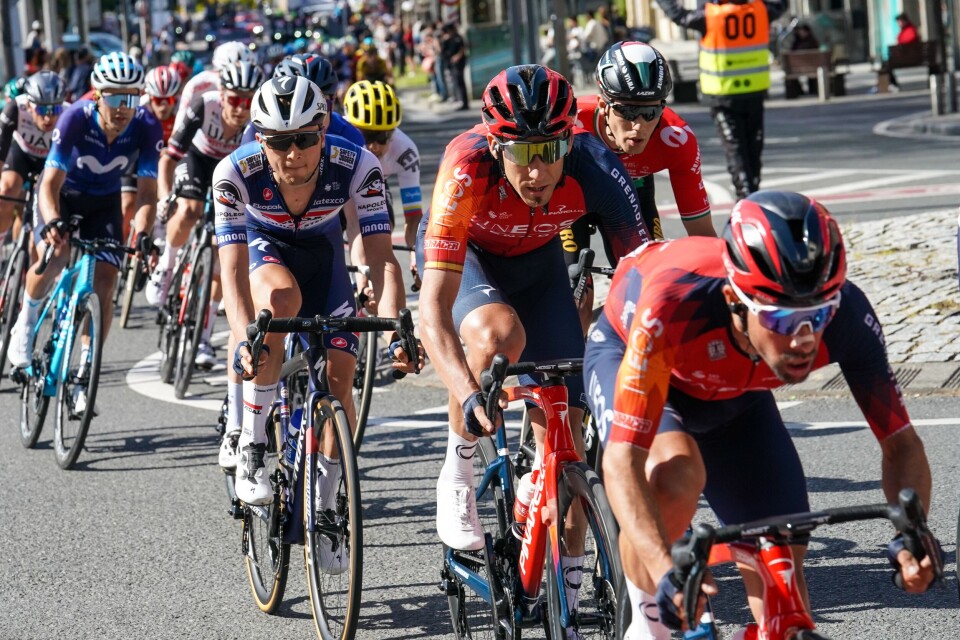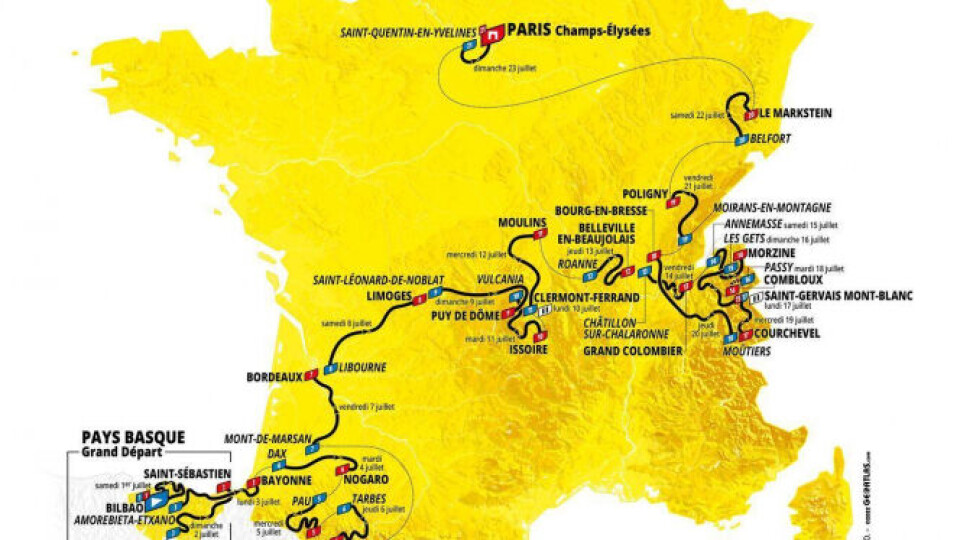-
Strikes and protests in January 2026 and how you may be affected
Doctors, rail staff, and farmers are all taking action
-
Good news as lower electricity bills confirmed in France
The change is not a ‘revolution’ but will give some purchasing power back, minister says
-
French ski resorts report excellent Christmas despite less snow than last year
Bookings are up and non-snow related activities are also on the rise
Interesting facts on this week’s Tour de France destinations
What do we know about the French places that the cycling extravaganza is passing through?

After beginning in Spain, crossing the Pyrenees and zigzagging up through the south-west, France’s emblematic cycling race is now snaking eastwards.
Here we provide fun facts about the places the Tour de France will pass through over the next week.
Monday, July 10: Rest day
Tuesday, July 11: Vulcania to Issoire (167.5km)
Vulcania - as you may have guessed - is not a town.
Situated about 17km west of Clermont-Ferrand, it is an educational amusement park that focuses on volcanoes.
It was the brainchild of French volcanologist Maurice Krafft.
Former French president Valéry Giscard d’Estaing pushed for the park’s construction after Krafft died in a volcanic eruption in Japan in 1991.
The park, which opened in 2002, features a 4D cinema, greenhouses showing the benefits of volcanoes for the environment and a submarine simulator that shows deep-sea volcanoes.
Meanwhile, Issoire, situated towards the start of the A75 that runs from Clermont-Ferrand to Béziers, is sometimes referred to as the gateway to the south.

Picture credit: Tour de France
Wednesday, July 12: Clermont-Ferrand to Moulins (180km)
Clermont-Ferrand, the result of a union between the towns of Clermont and Montferrand in the 17th century, is the capital of the Puy-de-Dôme department.
It also used to be the capital of Auvergne - known for its former volcanoes - before the region was swallowed up by the large Auvergne-Rhône-Alpes in 2016.
The volcanoes, widely considered extinct, have left their mark, both on the landscape and some of the buildings.
For example, Clermont-Ferrand is known for its black cathedral. It is this colour because it was constructed with volcanic rock.
It is also known for having the headquarters of the French firm Michelin.
Moulins, which sits to the north of Clermont-Ferrand, is today the capital of the Allier department. But in the past, it was the capital of Bourbonnais, the former duchy of the rich and powerful Bourbon family.
The city got its name from the many watermills and windmills that once stretched over its hills, along its streams and on the Allier river.
French businesswoman and fashion designer Gabrielle ‘Coco’ Chanel spent six years in Moulins from 1900. It was here, singing ‘Qui qu’a vu Coco dans le Trocadéro’ (‘Who saw Coco in the Trocadero’) that she got her nickname.
Read also: Tour de France, Race for Madmen
Thursday, July 13: Roanne to Belleville-en-Beaujolais (169km)
Roanne, which sits on the Loire river around 100km north-west of Lyon, is famous for its textiles.
From the Middle Ages, peasants would spin and weave flax and hemp. The industry was helped by the proximity of Lyonnais silk workers who found a qualified workforce nearby.
Later, in the 19th century, Roanne, with a growing number of textile factories, became known as ‘la ville aux cent cheminées’ (‘the city of a hundred chimneys’).
The industry was helped by the city’s proximity to the Loire river. Indeed Roanne has served as a shipping hub ever since Roman times. From casks of Beaujolais wine to coal from Saint-Etienne, anything moving through central France will likely be passing through the city.
Belleville-en-Beaujolais is situated between Lyon and Macon. One of its quirks is its Fête des conscrits, held at the end of February each year. Its origins are in military conscription and the tradition has endured since the end of the 19th century.
Friday, July 14: Châtillon-sur-Chalaronne to Grand Colombier (138km)
This will be the first time that Châtillon-sur-Chalaronne, a medieval town situated 25km south-west of Bourg-en-Bresse, has hosted the Tour de France.
Grand Colombier, a peak with views towards Geneva, the Jura mountain range and Lac Du Bourget, is more familiar to fans of the cycling extravaganza.
Although it was only introduced to the tour in 2012, it is well-known for being one of the most difficult ascents in the country.
Saturday, July 15: Annemasse to Morzine Les Portes Du Soleil (152km)
Annemasse is snuggled right up onto France’s border with Switzerland. It forms part of the suburbs of Geneva. Nearly a third of the 90,000 people who live in Greater Annemasse work in Switzerland. To support this workforce, the first regional train (RER) across the Swiss-French border, was completed in 2019.
Morzine forms part of a popular ski resort near the French-Swiss border. Before Morzine became a winter sports destination, it was renowned for its production of slate.
Related articles
Beer cheat, peeing, Donald Trump: Six facts about the Tour de France
























